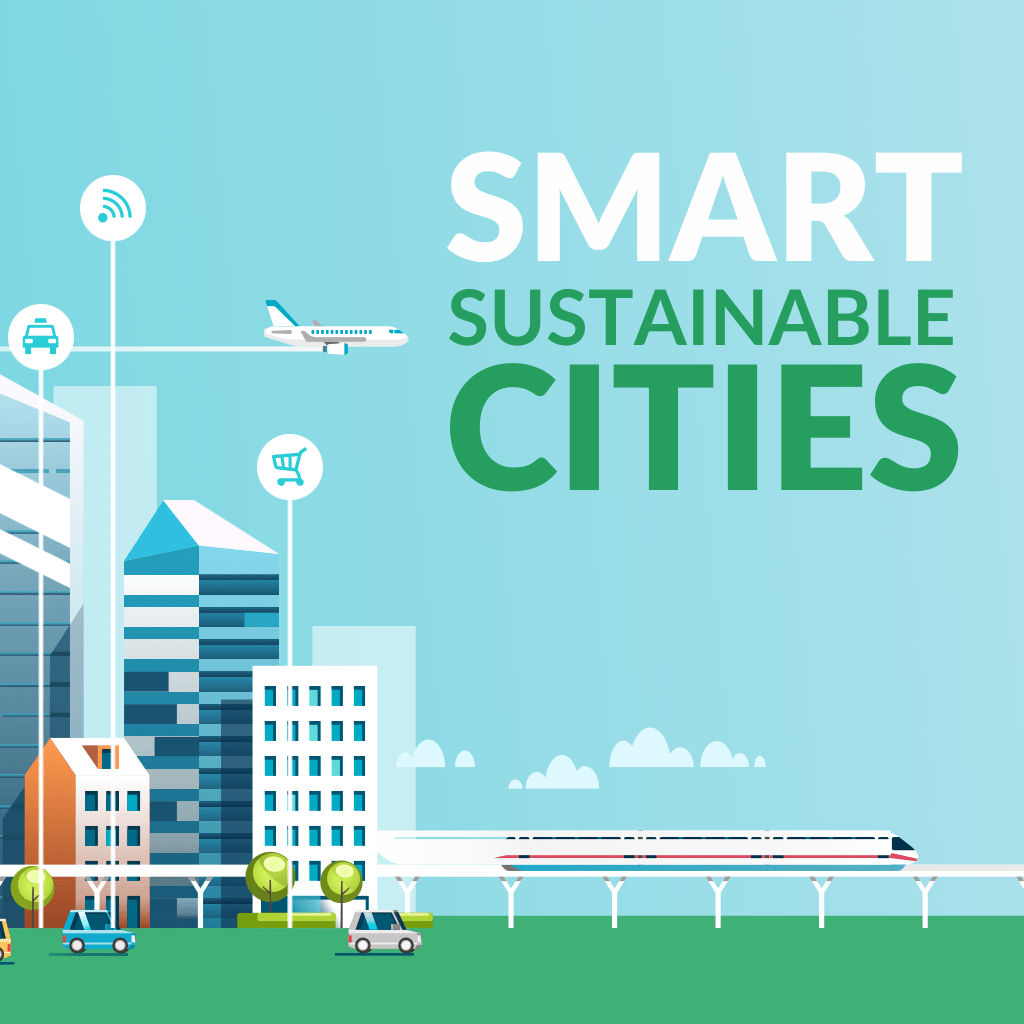Sustainable living refers to a lifestyle that aims to reduce an individual’s or community’s negative impact on the environment and promote the conservation of natural resources for the benefit of future generations. It involves making conscious choices and adopting practices that minimize waste, conserve energy and water, and promote the use of renewable resources.
Here are some key aspects of sustainable living:
- Energy conservation: Reducing energy consumption is crucial for sustainable living. This can be achieved by using energy-efficient appliances, improving insulation in homes, and utilizing renewable energy sources like solar or wind power.
- Waste reduction and recycling: Minimizing waste production and practicing recycling are important aspects of sustainable living. This includes reducing single-use items, composting organic waste, and recycling materials such as paper, plastic, glass, and metal.
- Water conservation: Conserving water is essential, especially in regions experiencing water scarcity. Installing low-flow fixtures, fixing leaks, collecting rainwater, and using water-efficient practices in gardening and landscaping are effective ways to reduce water consumption.
- Sustainable transportation: Opting for eco-friendly transportation methods, such as walking, cycling, or using public transportation, reduces greenhouse gas emissions and promotes sustainable living. Electric vehicles or carpooling are also sustainable alternatives to traditional gasoline-powered cars.
- Responsible consumption: Choosing products and services that are sustainably sourced, produced, and packaged helps reduce environmental impact. Supporting local businesses and buying second-hand or durable goods are examples of responsible consumption.
- Food choices: Adopting a sustainable diet involves consuming locally sourced, organic, and seasonal foods. Reducing meat consumption, supporting sustainable farming practices, and minimizing food waste are important aspects of sustainable food choices.
- Conservation and preservation: Protecting natural resources and biodiversity is crucial for sustainable living. This can be achieved through efforts such as planting trees, preserving natural habitats, and supporting conservation organizations.
- Education and awareness: Raising awareness about sustainable living practices through education and community engagement is vital. Sharing knowledge, participating in environmental initiatives, and encouraging others to adopt sustainable habits contribute to a more sustainable society.
By incorporating these practices into our daily lives, we can contribute to a more sustainable future and help preserve the planet for generations to come.
when it required Green Commutes ?
“Green Commutes” refers to environmentally friendly modes of transportation that aim to reduce carbon emissions and promote sustainability in daily commuting. It involves choosing alternatives to conventional vehicles powered by fossil fuels, such as cars that run on gasoline or diesel. Green commuting options typically include:
- Public transportation: Utilizing buses, trams, trains, subways, or other forms of public transit that operate on cleaner energy sources, such as electricity or renewable fuels.
- Cycling: Riding bicycles for commuting purposes, which not only reduces pollution but also provides health benefits through physical exercise.
- Walking: Opting to walk short distances instead of using motorized transportation, which reduces both emissions and traffic congestion.
- Carpooling and ridesharing: Sharing a vehicle with others who have similar commutes, reducing the number of cars on the road and emissions per passenger.
- Electric vehicles (EVs): Using electric cars, bikes, or scooters that produce zero tailpipe emissions, as they are powered by electricity from the grid or renewable sources.
- Alternative fuel vehicles: Utilizing vehicles that run on cleaner fuels, such as biodiesel, ethanol, hydrogen, or natural gas, to minimize carbon emissions and reduce dependence on fossil fuels.
Green Commutes contribute to sustainable development by decreasing air pollution, conserving energy, reducing traffic congestion, and mitigating climate change impacts. They promote a healthier and more eco-friendly transportation system, benefitting both individuals and the environment.
when it required Green Commutes ?
Green Commutes are encouraged and beneficial in various situations. Here are some scenarios where adopting green commuting practices is particularly important:
- Urban areas: Cities often face significant challenges related to air pollution, congestion, and limited parking spaces. Encouraging green commuting can help alleviate these issues by reducing emissions and traffic congestion, making cities more livable and sustainable.
- High-traffic areas: Locations with heavy traffic flow can greatly benefit from green commuting. By reducing the number of vehicles on the road through carpooling, public transportation, or cycling, congestion can be eased, resulting in smoother traffic flow and shorter travel times.
- Work commutes: Commuting to work is a significant contributor to traffic congestion and carbon emissions. Encouraging employees to adopt green commuting options can have a positive impact on the environment while also reducing commuting costs and stress.
- Short-distance trips: Green commuting options like walking or cycling are particularly suitable for short-distance trips, such as running errands, going to nearby shops, or commuting within a campus or neighborhood. By opting for these eco-friendly modes of transportation, individuals can reduce their carbon footprint.
- Events and gatherings: Large-scale events, such as concerts, conferences, or sports games, often attract a substantial number of attendees. Encouraging green commuting, such as providing shuttle services, promoting public transportation, or facilitating bike parking, can help minimize the environmental impact of transportation associated with these events.
- Climate change mitigation: As the world faces the urgent need to mitigate climate change, transitioning to green commuting practices becomes increasingly crucial. By reducing reliance on fossil fuel-powered vehicles, individuals and communities can significantly contribute to reducing greenhouse gas emissions and combating climate change.
Overall, adopting green commuting practices is essential in various contexts to promote sustainability, reduce emissions, improve air quality, and create more livable communities.
who it required Green Commutes ?
Green Commutes are beneficial and necessary for several stakeholders, including:
- Individuals: Green commuting offers numerous benefits to individuals. It helps reduce transportation costs by utilizing more affordable modes of transportation like public transit, cycling, or walking. It can also improve physical fitness and overall well-being by incorporating exercise into daily routines. Additionally, green commuting allows individuals to contribute to environmental sustainability by reducing their carbon footprint and supporting cleaner air quality.
- Communities: Green commuting positively impacts communities by reducing traffic congestion and improving air quality. It helps create more livable cities and neighborhoods with less noise pollution and enhanced mobility options. Additionally, promoting green commuting can foster a sense of community and social interaction among individuals who choose similar modes of transportation, such as carpooling or cycling groups.
- Employers: Encouraging green commuting among employees can benefit employers in several ways. It helps reduce parking space demand and traffic congestion around workplace areas, improving accessibility for employees and visitors. Moreover, promoting sustainable commuting practices can enhance a company’s reputation as an environmentally responsible organization, leading to positive brand image and employee satisfaction.
- Governments and policymakers: Green commuting aligns with the goals of governments and policymakers striving to achieve sustainable and environmentally friendly transportation systems. By promoting and investing in public transportation infrastructure, cycling lanes, pedestrian-friendly spaces, and incentives for electric vehicles, governments can reduce carbon emissions, alleviate traffic congestion, and improve air quality. Additionally, supporting green commuting aligns with climate change mitigation strategies and environmental sustainability targets at regional, national, and international levels.
- Environment: Green commuting plays a crucial role in reducing greenhouse gas emissions and addressing climate change. Transportation is a significant contributor to carbon emissions, and transitioning to cleaner modes of commuting helps mitigate the environmental impact. By reducing reliance on fossil fuel-powered vehicles, green commuting helps protect ecosystems, reduce air pollution, and conserve natural resources.
By encouraging and adopting green commuting practices, individuals, communities, employers, governments, and the environment can all benefit from reduced emissions, improved air quality, enhanced mobility options, and a more sustainable future.
where it required Green Commutes ?
Green commutes are required in various locations and settings where transportation impacts the environment and sustainability. Here are some specific areas where green commuting practices are particularly important:
- Urban areas: Cities and densely populated areas face challenges such as traffic congestion, air pollution, and limited space for parking. Encouraging green commutes in urban areas can help reduce emissions, ease traffic congestion, and improve air quality, making cities more livable and sustainable.
- Industrial zones: Industrial areas often have high vehicular traffic due to transportation of goods and employees. Implementing green commuting strategies, such as encouraging employees to carpool, promoting public transportation options, or providing shuttle services, can help reduce the environmental impact of transportation in these areas.
- Educational institutions: Schools, colleges, and universities typically have a large population of students, faculty, and staff commuting to and from the campus. Promoting green commuting options like cycling, walking, or utilizing public transportation can reduce traffic congestion around educational institutions and contribute to a more sustainable campus.
- Business districts: Areas with a concentration of offices, commercial buildings, and business activities often experience heavy traffic during peak commuting hours. Encouraging green commutes through initiatives like carpooling programs, supporting public transit, and providing bike-friendly infrastructure can help alleviate congestion and reduce emissions in business districts.
- Event venues: Events such as concerts, festivals, or sports games attract a large number of attendees. Green commuting is crucial in such cases to minimize the environmental impact of transportation to and from event venues. Organizers can promote public transportation, provide shuttle services, or facilitate bike parking to encourage attendees to choose eco-friendly commuting options.
- Residential communities: Promoting green commuting within residential communities can help reduce the number of vehicles on the road, ease traffic congestion, and create a more sustainable living environment. Implementing infrastructure for cycling, pedestrian-friendly paths, and access to public transportation can encourage residents to adopt green commuting practices.
- Tourist destinations: Popular tourist destinations often experience high traffic volumes, particularly during peak seasons. Encouraging tourists and visitors to utilize green commuting options like public transportation, shared mobility services, or biking can help minimize congestion, reduce pollution, and preserve the natural beauty of tourist spots.
In summary, green commutes are required in various settings, including urban areas, industrial zones, educational institutions, business districts, event venues, residential communities, and tourist destinations. By implementing and promoting eco-friendly transportation options in these areas, we can create more sustainable and environmentally conscious transportation systems.
how it required Green Commutes ?
Promoting and implementing green commutes can be achieved through a combination of strategies, initiatives, and supportive measures. Here are some ways in which green commutes can be encouraged:
- Infrastructure development: Building and improving infrastructure that supports green commuting is essential. This includes developing and expanding public transportation networks, constructing dedicated cycling lanes and pedestrian-friendly paths, and establishing safe and secure bike parking facilities. Creating an infrastructure that facilitates and encourages green commuting options is key to its adoption.
- Public transportation initiatives: Governments, transportation authorities, and employers can implement initiatives to promote the use of public transportation. This can include providing discounted fares, implementing efficient and reliable schedules, improving accessibility to public transit stations, and enhancing the overall quality and comfort of public transportation services.
- Carpooling and ridesharing programs: Encouraging carpooling and ridesharing among commuters can significantly reduce the number of vehicles on the road. Employers can facilitate carpooling programs by providing designated parking spaces for carpoolers, organizing carpool matching services, or incentivizing carpooling through preferential parking or financial incentives.
- Bicycle-friendly measures: Creating a bicycle-friendly environment involves establishing dedicated cycling lanes, bike-sharing programs, and secure bike parking facilities. Employers can also provide amenities such as showers and changing rooms for cyclists. Promoting cycling as a viable commuting option encourages individuals to choose greener modes of transportation.
- Telecommuting and flexible work arrangements: Encouraging telecommuting and flexible work arrangements can reduce the need for daily commuting. This can be achieved by providing employees with the necessary technology and infrastructure to work remotely, allowing flexible work hours, or implementing remote work policies. By reducing the frequency of commuting, the environmental impact can be minimized.
- Education and awareness campaigns: Conducting education and awareness campaigns about the benefits of green commuting can help change commuting behaviors. These campaigns can highlight the environmental, health, and cost-saving advantages of using alternative modes of transportation. Providing information, resources, and incentives can encourage individuals to adopt green commuting practices.
- Incentives and rewards: Governments, employers, and transportation authorities can offer incentives and rewards to individuals who choose green commuting options. These can include tax incentives for purchasing electric vehicles, subsidized public transportation passes, parking benefits for green vehicles, or recognition programs for individuals or companies with outstanding green commuting practices.
- Policy and regulation: Governments can enact policies and regulations that promote green commuting. This can include setting emissions standards for vehicles, providing financial incentives for green transportation, implementing congestion pricing schemes, or mandating the provision of cycling and pedestrian infrastructure in urban planning.
By combining these strategies and initiatives, it is possible to create an environment where green commuting is encouraged and accessible to individuals. Collaboration among government entities, employers, transportation authorities, and communities is crucial to successfully implementing green commuting practices.
case study Green Commutes ?
Case Study: Green Commutes in Portland, Oregon
Portland, Oregon, in the United States, has become a prominent case study for implementing and promoting green commutes. The city has prioritized sustainability and alternative transportation options, resulting in significant progress towards reducing emissions and promoting eco-friendly commuting practices.
- Extensive public transportation: Portland has an extensive public transportation system, operated by TriMet, which includes buses, light rail, and streetcars. The city has made investments in expanding and improving public transit infrastructure, making it more convenient and accessible for residents and commuters. This has led to a higher rate of public transit usage, reducing the reliance on personal vehicles.
- Bicycle-friendly infrastructure: Portland is renowned for its extensive network of cycling infrastructure, including dedicated bike lanes, bike boulevards, and bike parking facilities. The city has actively encouraged cycling as a viable commuting option by providing amenities such as bike-sharing programs, repair stations, and bike valet parking at various events and public spaces.
- Carpooling initiatives: To reduce the number of single-occupancy vehicles on the road, Portland has implemented carpooling initiatives. The city supports platforms that facilitate carpool matching and provides preferential parking for carpoolers. Employers have also played a role by offering incentives to employees who carpool, such as reserved parking spaces and reduced parking fees.
- Electric vehicle infrastructure: Portland has developed a robust electric vehicle (EV) charging infrastructure throughout the city. Charging stations are readily available in public areas, workplaces, and residential complexes, making EV ownership more practical and convenient. The city has also incentivized the purchase of EVs through tax credits and rebates.
- Commuter benefits program: The city of Portland requires large employers to offer commuter benefits to their employees. Employers must provide transportation options beyond traditional driving, such as subsidized public transit passes, bicycle parking, or telecommuting options. This policy encourages employers to actively promote and support green commuting practices.
- Education and outreach: Portland has conducted extensive education and outreach campaigns to raise awareness about green commuting options and their benefits. The campaigns focus on promoting public transit, cycling, walking, and carpooling, while also highlighting the environmental and health advantages. These efforts have contributed to a cultural shift in commuting behaviors and increased adoption of green commuting practices.
As a result of these initiatives, Portland has seen notable success in reducing emissions and promoting sustainable transportation. The city consistently ranks among the top U.S. cities for cycling, public transportation usage, and alternative commuting methods. The commitment to green commutes has transformed Portland into a model for sustainable urban transportation planning and serves as an inspiration for other cities seeking to implement similar initiatives.
It’s important to note that while Portland’s case study showcases the success of green commutes, the specific strategies and initiatives implemented in other locations may vary based on local context, infrastructure, and community needs.
white paper on Green Commutes ?
Title: Green Commutes: A Sustainable Approach to Transportation
Abstract: This white paper examines the concept of green commutes and their significance in achieving sustainable transportation systems. It explores the environmental, social, and economic benefits of adopting eco-friendly modes of commuting, such as public transportation, cycling, walking, carpooling, and electric vehicles. The paper also highlights successful case studies, policy considerations, and strategies for promoting and implementing green commuting practices in various urban and suburban contexts. By analyzing the positive impacts of green commutes, this white paper aims to inspire individuals, communities, businesses, and policymakers to embrace sustainable transportation options for a greener future.
Table of Contents:
- Introduction
- Background and significance of green commutes
- Objectives of the white paper
- Understanding Green Commutes
- Definition and scope of green commutes
- Environmental benefits of green commuting
- Social and health advantages of green commuting
- Economic implications and cost savings
- Modes of Green Commuting
- Public transportation: The backbone of sustainable commuting
- Cycling and walking: Promoting active transportation
- Carpooling and ridesharing: Reducing traffic congestion and emissions
- Electric vehicles: Driving towards a zero-emission future
- Other alternative modes: Biodiesel, natural gas, and hydrogen vehicles
- Case Studies
- Portland, Oregon: Leading the way in sustainable transportation
- Curitiba, Brazil: A model for efficient public transit systems
- Copenhagen, Denmark: Cycling paradise and urban planning
- Amsterdam, Netherlands: Prioritizing cycling and pedestrian infrastructure
- Singapore: Integrated transport systems and smart solutions
- Promoting and Implementing Green Commuting
- Infrastructure development: Creating a supportive environment
- Policy considerations and regulatory frameworks
- Public-private partnerships and collaboration
- Education and awareness campaigns
- Incentives and rewards for green commuting
- Workplace initiatives and commuter benefits programs
- Challenges and Solutions
- Overcoming barriers to green commuting
- Addressing infrastructure gaps and limitations
- Behavior change and cultural shifts
- Equity considerations in promoting green commutes
- Future Trends and Recommendations
- Technological advancements and smart transportation solutions
- Integration with urban planning and land use policies
- Enhancing intermodal connectivity
- Research and data-driven decision-making
- Collaboration and knowledge sharing among stakeholders
- Conclusion
- Recap of key findings and insights
- Call to action for a sustainable transportation future
References
Note: This is a general structure for a white paper on green commutes. Specific content and sections may vary based on the target audience, context, and desired depth of analysis.






